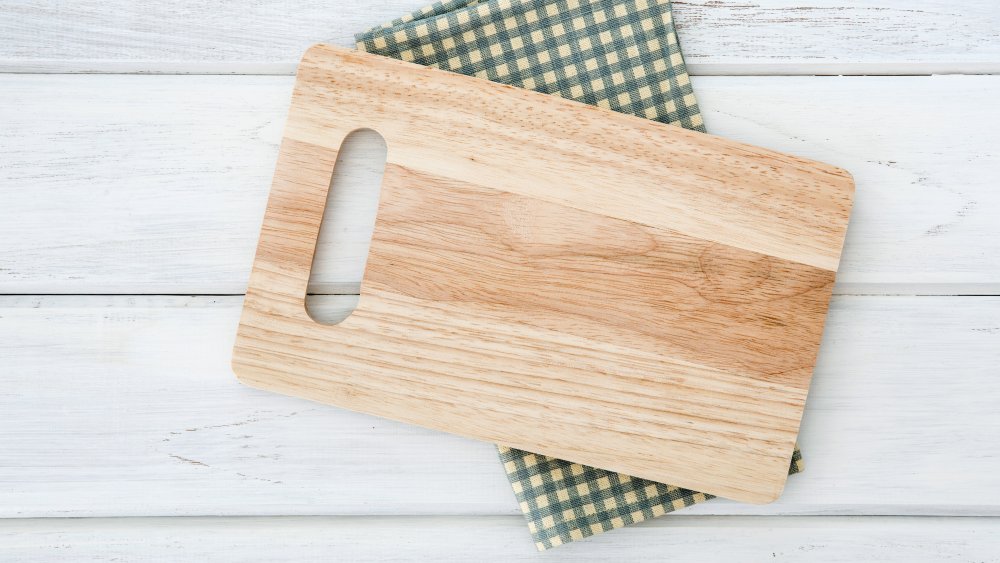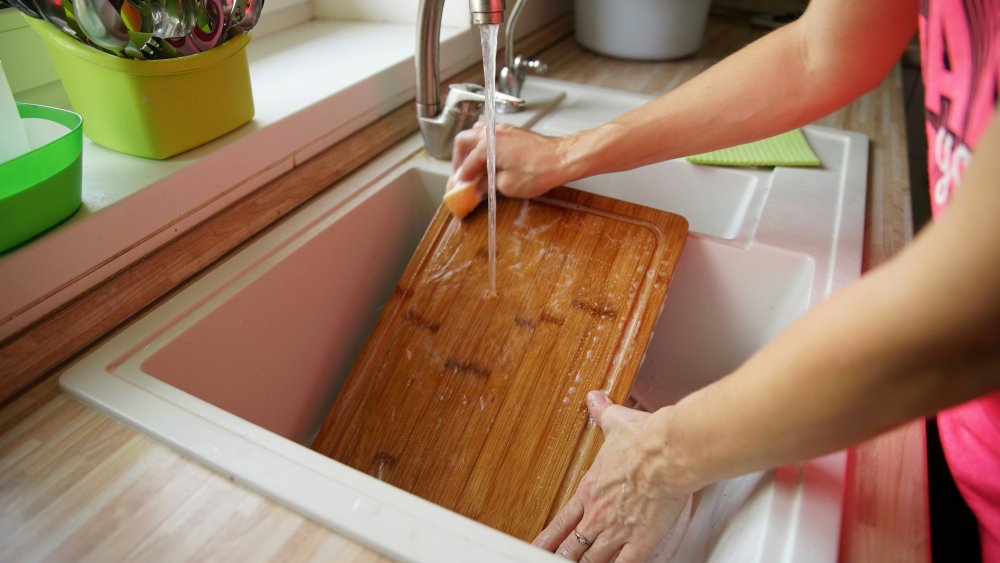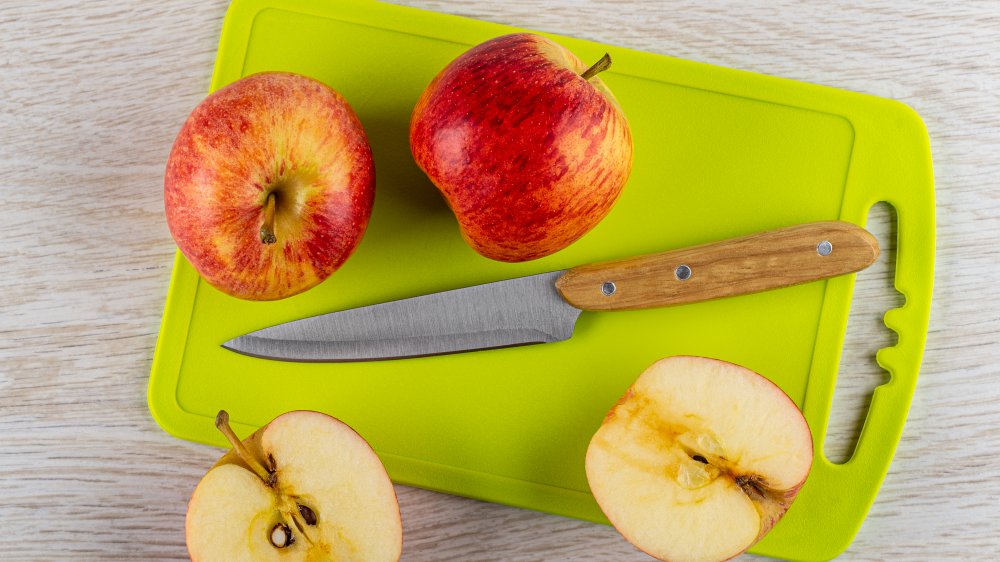This Is The Right Way To Clean Your Cutting Board
For any chef and home cook, keeping the cutting board — a must-have in the kitchen — clean and well-maintained is crucial in order to have it last for the long haul and not contaminate your ingredients.
When cleaning wooden cutting boards (or any wooden utensil, for that matter), you should never stick it in the dishwasher. Why? Because wood is an organic material, too much exposure to blasts of hot water and dish detergent can strip off oils and cause it to warp or crack. If you want to treat your wooden cutting board right, The Kitchn recommends washing it with a bit of soap, rinsing it in hot water, wiping it clean, and then allowing it to dry in an upright position.
Real Simple adds that when you're scrubbing the board, you should make sure to give any areas with knife marks, scratches, or inconsistencies in the wood a little more elbow grease. Also, you should clean, scrub, rinse, and dry both sides of the board because though you may cut ingredients on one side, juices, such as those from meat, can drip and end up contaminating the other side.
Other ways to clean a wooden cutting board
If you feel antsy about just using dish soap to clean your wooden board after cutting raw meat, you can also soak it in a bleach solution in order to remove all bacteria. To make the solution, add 1 tablespoon of bleach to a gallon of water. Once you have let your board soak for a few minutes, rinse and dry it off. As an alternative to harsh chemicals, you can also mix one part white vinegar (or hydrogen peroxide if vinegar is not available) to four parts water instead.
In addition to these daily cleaning methods, you can also give your wooden cutting board a deep cleaning every month with lemon and salt. Sprinkle the board with coarse salt, such as sea salt or kosher salt. Scrub the salt down each side of the board with the fleshy part of a lemon cut in half. Let this mixture sit for about five minutes, then clean the whole board off with a sponge, rinse, and dry.
For some extra TLC for your wooden cutting board, apply a generous amount of food-grade mineral oil to all its sides, let it soak overnight, and keep it standing up to dry. The added oil prevents water from entering your board and warping the wood, according to Allrecipes. The Kitchn adds that besides mineral oil, you can use beeswax, walnut oil, almond oil, or pure tung oil. Olive oil or vegetable oils, however, should be avoided, as they go bad quickly.
How to clean a plastic cutting board
There are also ways to clean and take care of plastic cutting boards. Proper cleaning and maintenance of this kind of board is also important because though many believe it's more sanitary because of its non-porous surface, you also have to consider that it's more susceptible to scrapes. A worn-out plastic cutting board can carry bacteria inside its cuts and other areas of damage.
Even though plastic fares better than wood in the dishwasher, you should still wash a plastic cutting board by hand to prevent it from warping, and also to lengthen its lifespan. You can use a bleach solution (a teaspoon of bleach with a quart of water) and a soft sponge to clean your board. Rinse it off thoroughly with hot water and dry it upright. To remove stains, try a paste made from 1 teaspoon of baking soda, 1 teaspoon of salt, and 1 teaspoon of water. And if your plastic cutting board looks particularly worn and you notice loose plastic particles popping up on the board's surface, use a steel scouring pad to smooth it down.
All of these steps should keep your cutting board, whether it's made from wood or plastic, fresh and clean for a long time.


